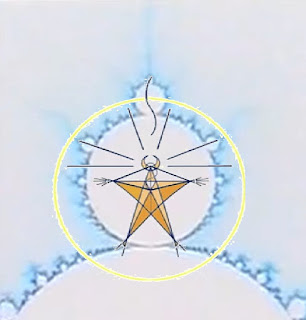It's a jammed, turned sacrum, commonly known as "sacroiliac joint dysfunction" (or "SIJD"), and also as a sacroiliac joint strain or sprain, sacroileitis, and as a dislocated or displaced sacrum.
Attempts to free tight hip joint flexors and hamstrings that are tight because of a turned sacrum are fruitless as long as the sacrum is displaced.
How a Jammed, Turned Sacrum Affects Walking, Hamstrings and Hip Joint Flexors
Ordinarily, each step forward in walking starts with a forward movement of the hip on that side, followed by the knee and foot. The flow of walking feels like a continuous connection through your whole leg through your hip, right up into your spine to about half-way up. Movement is a smooth, continuous flow with a whiplike motion from hip through the foot.Why the Hip Joint Flexors Get Tight
With a jammed, turned sacrum, the flow of leg movement through the hip joint, in walking, stops short of going through the pelvis. That's to protect against the pain of moving a jammed S-I joint.The broken flow of movement shows up as the person taking each step by bringing the thigh and knee forward first, rather than the hip; that movement uses the hip joint flexors -- the psoas (or iliopsoas) muscles and hamstrings.
You can neither stand up comfortably nor take a full, normal stride, so a fold appears at the hip joint.
The whole pelvis and leg exist in a state of cringing from the pain -- hip joint flexors and hamstrings, both.
How S-I Joint Pain Changes the Walking Pattern
The hamstrings tighten to stabilize and protect the painful pelvis.
This is not something someone decides. It's an automatic action triggered by the sensation of walking in that jammed a pattern, in part, to avoid the weird, uncomfortable sensation of moving with a strained, painful S-I joint. So, the person walks weirdly.
The person gets used to lugging the laggard leg forward, with the psoas and gluteus minimus muscles -- holding tight in a state of readiness to overcome tight hamstrings. Oddly enough, people consider that weird, altered movement pattern to be normal, if they notice it, at all.
Attempts to free tight hip joint flexors and hamstrings that are tight because of a turned sacrum are fruitless as long as the sacrum is displaced.
What It Takes to Free the Hip Joint Flexors and Hamstrings
One must correct the shape of the pelvis so that strain comes off the S-I joints.When that happens, the hip joint flexors and hamstrings automatically relax.
After that, it's a simple matter of a session or so of clinical somatic education (clean-up) or some somatic education exercises to restore a healthy walking pattern.
MORE: https://lawrencegoldsomatics.blogspot.com/2018/02/symptoms-of-sacroiliac-joint.html
After that, it's a simple matter of a session or so of clinical somatic education (clean-up) or some somatic education exercises to restore a healthy walking pattern.
MORE: https://lawrencegoldsomatics.blogspot.com/2018/02/symptoms-of-sacroiliac-joint.html



